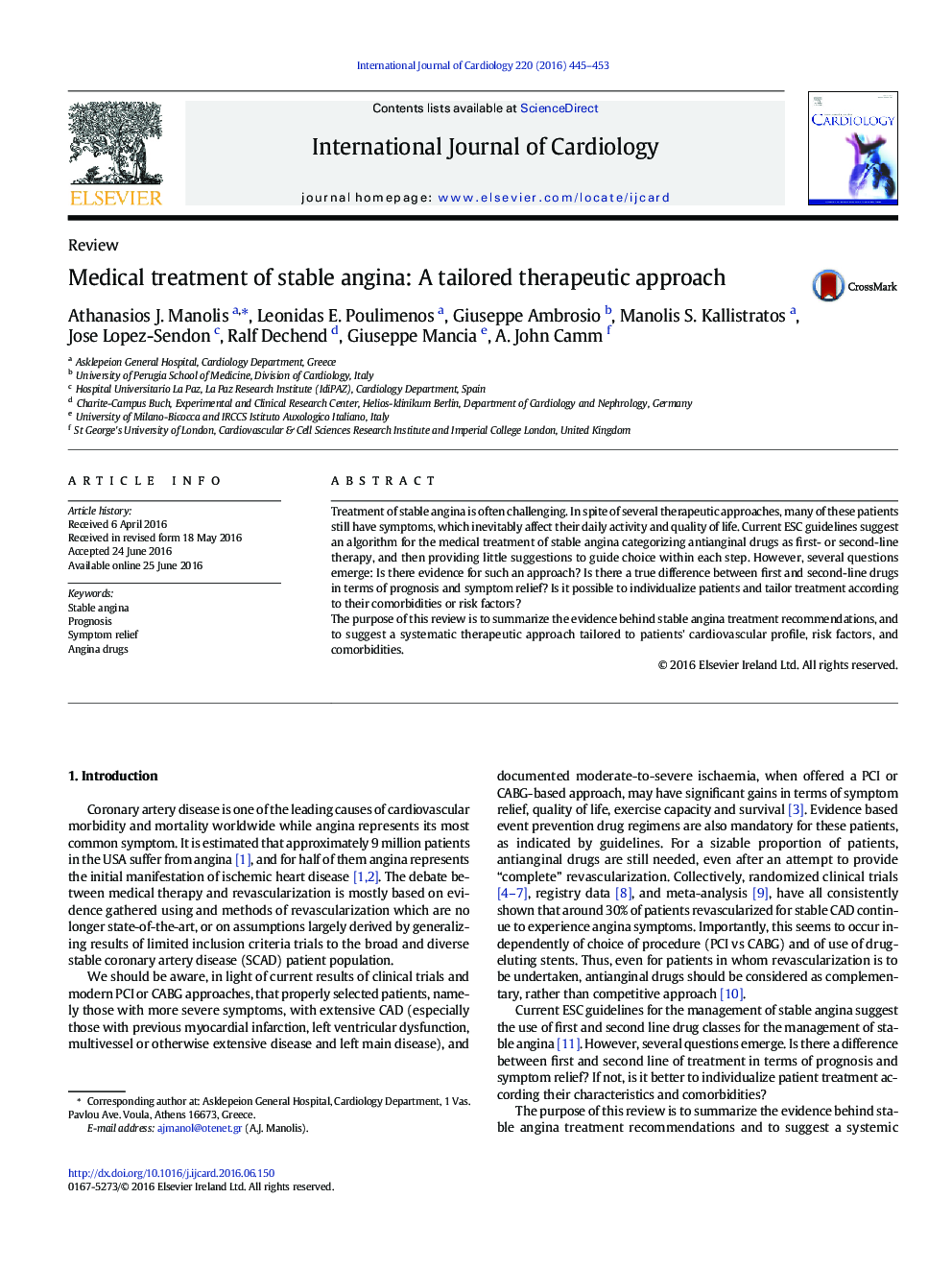| Article ID | Journal | Published Year | Pages | File Type |
|---|---|---|---|---|
| 5963340 | International Journal of Cardiology | 2016 | 9 Pages |
â¢First and second line antianginal drugs. Is there evidence for such an approach?â¢Antianginal drugs differ in terms of prognosis and symptom relief?â¢Tailor treatment in angina patients according comorbidities or risk factors.
Treatment of stable angina is often challenging. In spite of several therapeutic approaches, many of these patients still have symptoms, which inevitably affect their daily activity and quality of life. Current ESC guidelines suggest an algorithm for the medical treatment of stable angina categorizing antianginal drugs as first- or second-line therapy, and then providing little suggestions to guide choice within each step. However, several questions emerge: Is there evidence for such an approach? Is there a true difference between first and second-line drugs in terms of prognosis and symptom relief? Is it possible to individualize patients and tailor treatment according to their comorbidities or risk factors?The purpose of this review is to summarize the evidence behind stable angina treatment recommendations, and to suggest a systematic therapeutic approach tailored to patients' cardiovascular profile, risk factors, and comorbidities.
